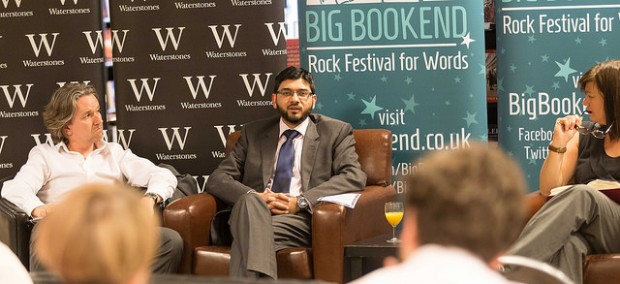Index relies entirely on the support of donors and readers to do its work.
Help us keep amplifying censored voices today.
[vc_row][vc_column][vc_column_text][/vc_column_text][vc_column_text]
[/vc_column_text][/vc_column][/vc_row][vc_row content_placement=”top”][vc_column width=”1/3″][vc_custom_heading text=”Free to air” font_container=”tag:p|font_size:24|text_align:left” link=”url:%20https%3A%2F%2Fwww.indexoncensorship.org%2F2017%2F09%2Ffree-to-air%2F|||”][vc_column_text]Through a range of in-depth reporting, interviews and illustrations, the autumn 2017 issue of Index on Censorship magazine explores how radio has been reborn and is innovating ways to deliver news in war zones, developing countries and online
With: Ismail Einashe, Peter Bazalgette, Wana Udobang[/vc_column_text][/vc_column][vc_column width=”1/3″][vc_single_image image=”95458″ img_size=”medium” alignment=”center” onclick=”custom_link” link=”https://www.indexoncensorship.org/2017/09/free-to-air/”][/vc_column][vc_column width=”1/3″ css=”.vc_custom_1481888488328{padding-bottom: 50px !important;}”][vc_custom_heading text=”Subscribe” font_container=”tag:p|font_size:24|text_align:left” link=”url:https%3A%2F%2Fwww.indexoncensorship.org%2Fsubscribe%2F|||”][vc_column_text]
In print, online. In your mailbox, on your iPad.
Subscription options from £18 or just £1.49 in the App Store for a digital issue.
Every subscriber helps support Index on Censorship’s projects around the world.
[/vc_column_text][/vc_column][/vc_row]
“Yassin Juma is an extraordinary journalist, who has taken great personal risks to get the story of what is happening in the war that is being waged in Somalia against Al-Shabaab,” writer Ismail Einashe told Index on Censorship.
But Juma is now in hiding.
Einashe interviewed the Kenyan investigative journalist for the latest issue of Index on Censorship magazine, which is themed on the risks of reporting worldwide.
Juma was arrested in January for posting information on social media about a recent attack on the Kenyan Defence Force by the Al-Shabaab militant group. Juma revealed that, according to a credible source within the KDF, 103 soldiers had been killed in an attack on the Kenyan army base in El Adde, Somalia.
The journalist was later arrested and faced charges of “misuse of a telecommunication gadget”. After being grilled by police and detained for two days, he was released without charge but has since gone into hiding, fearing that his reporting is angering the authorities.
Listen to Einashe explaining the significance of this case on the Soundcloud above. The full article, written by Einashe, is in the latest issue of Index on Censorship magazine.
Print copies of the magazine are available here, or you can take out a digital subscription via Exact Editions. Copies are also available at the BFI, the Serpentine Gallery, MagCulture, (London), News from Nowhere (Liverpool), Home (Manchester) and on Amazon. Each magazine sale helps Index on Censorship continue its fight for free expression worldwide.

Index hosted a debate at the Leeds Big Bookend festival (Photo: Steve Evans)
Does freedom of religion and freedom of speech come as a package or can you pick and choose? Do those suggesting freedom of expression should be “civilised” and that we should be wary of causing offence to people’s religious sensibilities have a point? Or are there too many people who are easily offended? Are our attempts to be polite actually significant obstructions to the discussion of important issues? These were just some of the questions tackled at “The new civility: are religious freedom and freedom of speech intertwined?” the 10 June event organised as part of the Leeds Big Bookend festival.
Chaired by Index on Censorship magazine editor Rachael Jolley, the panel was made up of assistant features editor at the Yorkshire Evening post Chris Bond, local imam Qari Muhammad Asim MBE and author Anthony Clavane.
In the past, people who have argued for greater religious freedom have also fought for greater freedom of speech, but the debate looked to address the idea that this connection has become somewhat lost. It sprang from the Spring 2015 issue of Index on Censorship, where writers from across the world, including Elif Safak and Ariel Dorfman, provided thoughtful analysis of the aftermath of Charlie Hebdo killings.
The debate threw up some fascinating themes and the panel were observed and questioned by an enthusiastic audience at Waterstones, Leeds. A full recording of the event in the form of a podcast can be listened to below.
The new civility: are religious freedom and freedom of speech intertwined? by Tttdebates on Mixcloud
In the next issue of Index on Censorship magazine, fantasy writer Neil Gaiman is interviewed by political cartoonist Martin Rowson about censorship, offence and how graphic novels stir controversy. You can listen to the highlights here and read the full story by subscribing or downloading the app (£1.79 on iTunes).
The interview sees them discussing Dr Who as any example of why we shouldn’t protect children from everything that might scare them; how the Hilary Mantel scandal is keeping the short story alive, and how the Comic Book Legal Defense Fund is fighting a never-ending battle. “Comics, because of the capacity of offence that an image can give, will always have one foot in the gutter,” says Gaiman.
Gaiman also opens up about the only time he had to abort collaboration with an artist (“I think that was the only time I’ve looked at something and said: ‘That’s too disturbing.’”) and on the backlash he received from penning the first transsexual character in a mainstream comic (first from Concerned Mothers of America, later from trans activists).
This article is from the upcoming winter edition of Index on Censorship magazine. Subscribe to Index on Censorship magazine by Dec 31, 2014 for 25% off a print subscription.